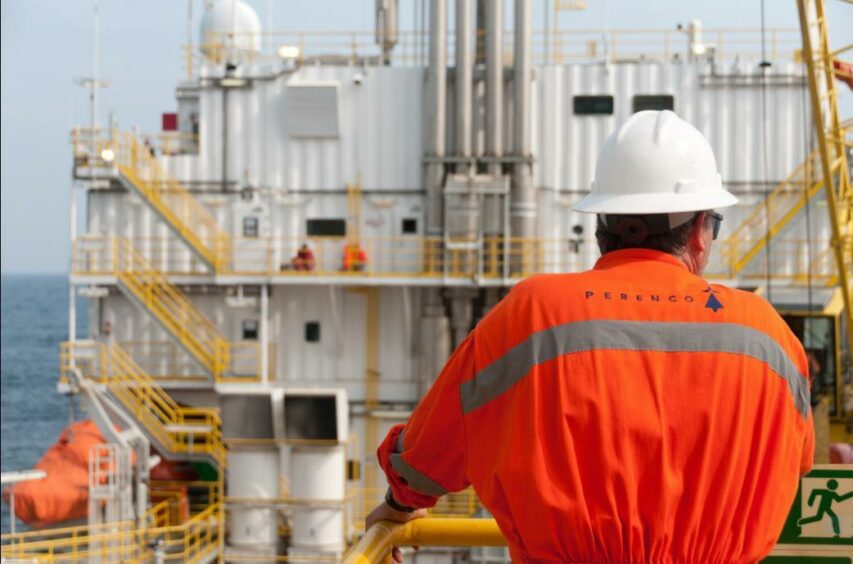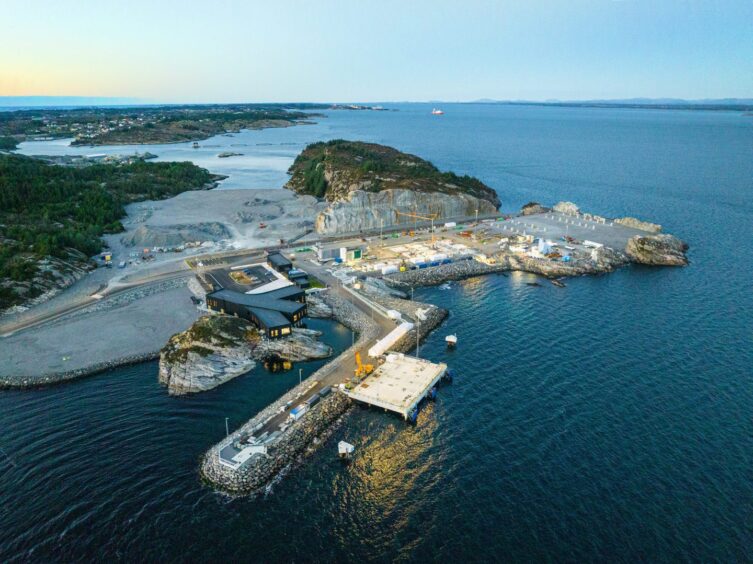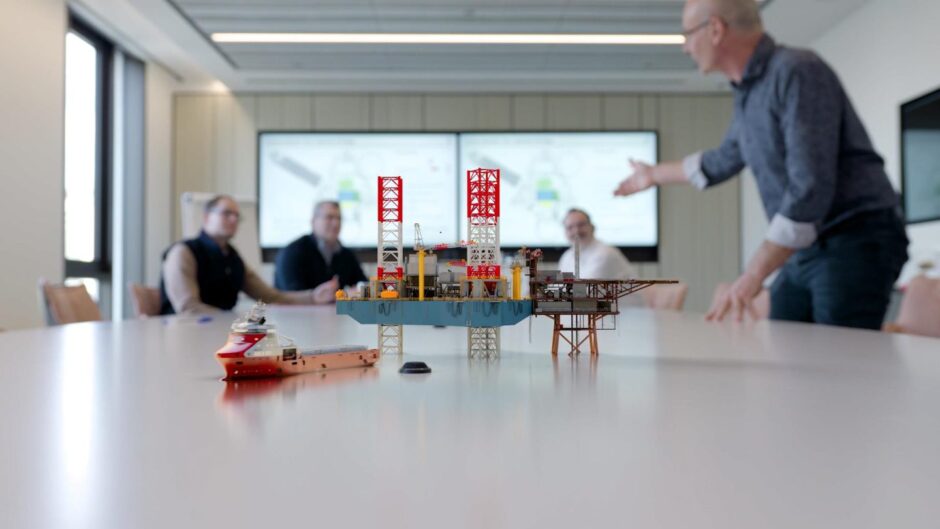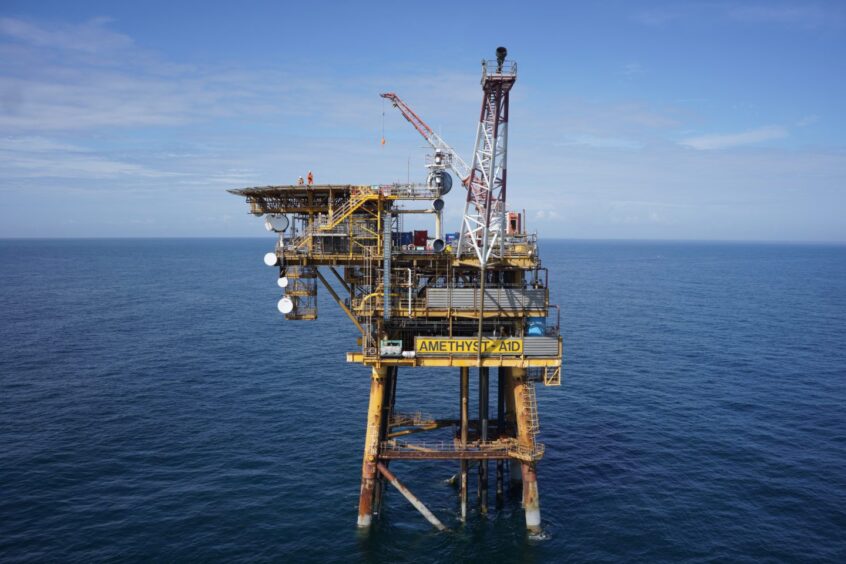
Carbon capture and storage (CCS) technology offers both a crucial step in the UK achieving net zero and a new stage in the North Sea energy industry’s lifespan, utilising existing infrastructure and depleted fields.
Scottish Government Cabinet Secretary for Net Zero and Energy Mairi McAllan recently called on the UK Government to accelerate the development of the country’s CCS potential, calling it “mission critical to net zero”.
However, despite this the UK is lagging, while Norway has taken an early lead in the European CCS market as it aims to position itself as the continent’s leading CO2 storage hub.
This is in no small part due to its Northern Lights project – a joint venture between Equinor, Shell and TotalEnergies, it is the first licensed CO₂ storage on the Norwegian continental shelf.
Able to store around 1.5mtpa of CO2, transport and storage operations are scheduled to begin in 2024, with commercial agreements already in place.

In addition, last year saw Norway, Denmark, Belgium, the Netherlands and Sweden strike a series of bilateral agreements on cross-border transport of CO2, aiming to use Norwegian and Danish sites to create a North Sea-wide CCUS market.
With the UK sitting out the deal, it risks cutting itself off from industrial carbon emitters, the clients needed to provide CO2, and crucially the money, needed to drive commercial CCS projects.
UK CCS potential
The UK has no shortage of CCS projects in the works, such as Acorn, Viking and Camelot.
In addition, the country created a CCS plan, envisioning a ‘market creation’ phase lasting until 2030; as the first projects establish the technical and commercial basis for the industry, before moving towards a ‘self-sustaining market’ from 2035 onwards.
To help drive the UK’s CCS potential, the North Sea Transition Authority (NSTA) held its first permitting round in 2023. A total of thirteen areas were offered, with 12 consortia securing a total of 21 licences.
One of these winners was Perenco, which along with partners Carbon Catalyst, Wintershall Dea and Sumitomo subsidiary Summit Energy Evolution Ltd (SEEL), is developing two CCS projects, Poseidon and Orion.
Orion will use the West Sole and Amethyst fields to store carbon dioxide and will connect onshore at Dimlington, with Poseidon using the larger Leman field, connecting to the Bacton Gas Terminal on the East Anglian coast.
The company is currently at the appraisal phase of the project, assessing the risks and practicalities of commercial scale carbon storage.
Perenco aims to undertake a three-month test to inject 5,000 tonnes of CO2 into Leman, with a one-month workover on an existing well to start at the end of the summer followed by the test most likely in mid-November this year.
Perenco CCS manager Louis Hannecart told Energy Voice: “Poseidon is a very big project. It’s our first project, but we could say that it’s a project of interest for the country, because it represents a massive store – one gigatonne.
“And in terms of national inventory for CCS, the information that will emerge from the early assessment of this CCS store is very important because there is a big portion of the national resources sitting in this area.”
The modelling problem
At normal atmospheric conditions, CO2 is a gas. When cooled, it becomes a solid, with no liquid intermediary phase. However, in a high-pressure environment, CO2 can become a liquid at certain temperatures.
This represents a major technical challenge, not just for Perenco, but for the CCS industry as a whole. The Leman injection test aims to gather crucial data to understand how the CO2 will behave when injected.
“This injection test is really a fundamental piece of work,” Hannecart said. “What we want to prove is the possibility of injecting CO2 from either a transportation condition, which is high pressure and liquid, into the depleted reservoir, which is very low pressure.
“The CO2 has some particular thermodynamics,” Hannecart explained. “When you pump this, the pressure will drop so you will see a phase change. The CO2 will become a gas again and when the CO2 becomes a gas you will have some cooling effects.
“These cooling conditions at the bottom of the well are completely unnatural, if you think about the production cycle of the gas. The gas is usually warmer, around 50-60 degrees Celsius. Here, we are going to put a system that will become cool at the bottom and then it will flow in the reservoir.”

Understanding these cooling effects is one of the key challenges needing to be solved to repurpose the UK’s depleted gas fields and existing infrastructure for use in CCS.
“You don’t have any software that can completely model these flows from the world to the reservoir, or how the permeability of your reservoir will behave when we see these effects,” Hannecart said.
“The big question is whether the wells will have better or lower injectivity when they see this kind of effect. The theory basically says that both can happen.”
Injection test
The injection test will consist of 10-12 batches of about 500 tonnes each. Each batch will simulate different injection conditions, such as pressure and the temperature at the wellhead.
The data from each test will be measured and compared to help calibrate simulations.
The modelling and testing will be a key part of the regulatory puzzle, as companies will need to demonstrate to the NSTA that they can predict how CO2 will behave in a reservoir to verify they can safely inject and store the CO2 to receive a commercial licence.
Perenco energy transition manager David Tutill added: “It’s a challenge in a regulatory and licensing senses as well. It’s never been done before within the UK continental shelf.”
“We have to work very closely with the Health and Safety Executive (HSE), Offshore Petroleum Regulator for Environment & Decommissioning (OPRED), the NSTA and other stakeholders to make sure that when we undertake the test and how we undertake the test is fully regulated.” From there, the first CCS projects will derisk the next ones in terms of understanding design and cost competitive technical solutions.
From there, the first CCS projects will derisk the next ones in terms of understanding design and cost competitive technical solutions.
“We are really at the very beginning of one of the fundamentals of future operations,” Hannecart said.
But the technical work is only part of the issue – the developers must also prove that there is a commercial market for their projects.
“We expect that by mid-2025 to the end of 2026, there will be a commercial stream with emitters, whether UK domestic emitters or, hopefully, continental emitters,” Hannecart said.
“In a year from now, there will have to be some committing decisions and exclusive discussions, which is not the case today.
“And hopefully, the track one projects at that point will have opened the way for commercial regulation aspects that are not fully known today, which is one of the things preventing people from accelerating.”
Accelerating CCS
Overcoming the regulatory hurdles will be key to answering McAllan’s call to accelerate CCS development, as well as helping close the gap between the UK and its competitors, such as Norway.
Perenco’s Tutill noted: “We’re seeing that on the side of emitters in Europe, they’re increasingly reluctant to commit to future projects. They’re looking for cheaper options, in the scale of something like Poseidon, allowing for a much more economical, cheaper, storage option.”
And Hannecart added: “We are engaging with a lot of continental players to let them know that these projects are coming and they should not put all their eggs in the Norwegian basket today because maybe there will be some nice options and cheaper options available very soon.
“We are trying to grab some fairly good attention now from big players in continental Europe and Netherlands, Germany, that maybe it’s not urgent, to wait and not sign a long-term contract today with Norwegian CCS, which is more advanced.”
Recommended for you

